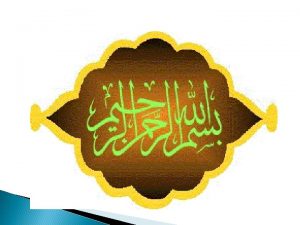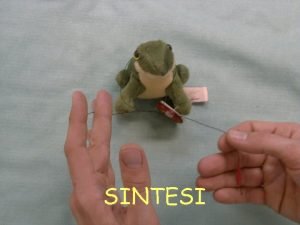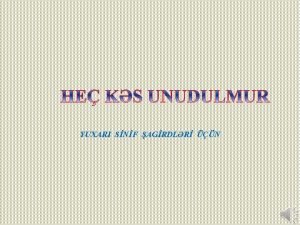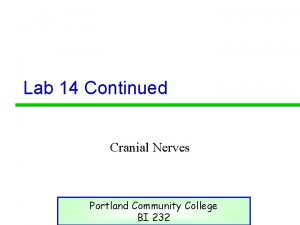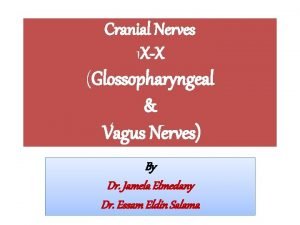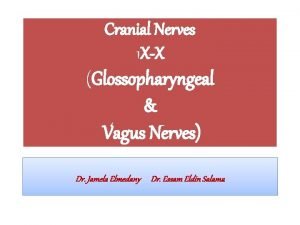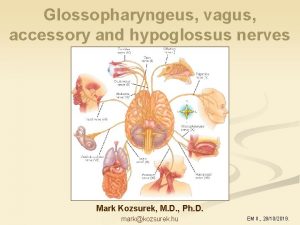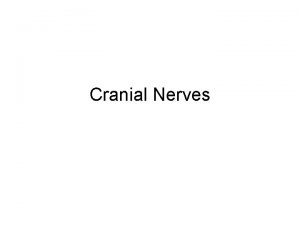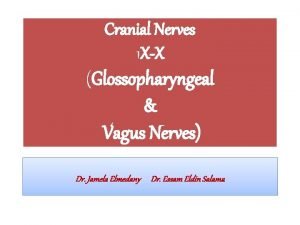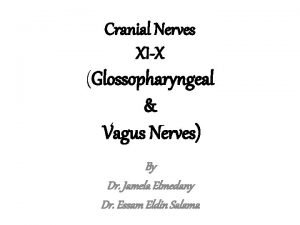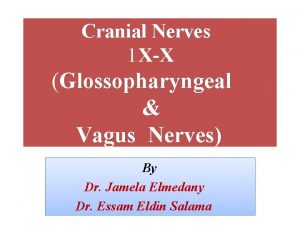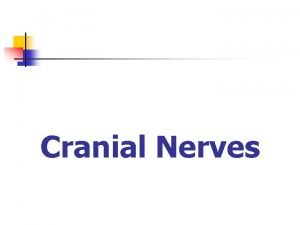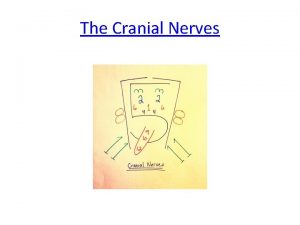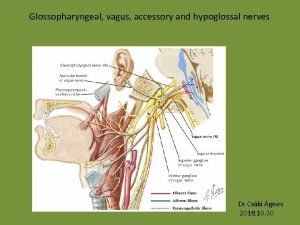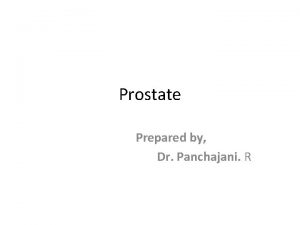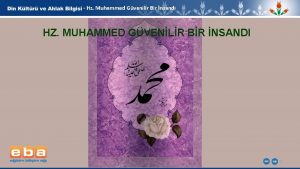Glossopharyngeal and Accessary nerves Muhammed Asif Dept of


















- Slides: 18

Glossopharyngeal and Accessary nerves Muhammed Asif Dept. of Anatomy Yenepoya medical college

GLOSSOPHARYNGEAL NERVE • Ninth cranial nerve. • Mixed nerve containing motor, sensory & secretomotor fibers. • Emerges from the Medulla Oblongata

Functional components Nucleus Parts of the body SVE Nucleus ambiguus Stylopharyngeus muscle GVE Inferior salivatory nucleus Secretomotor fibers to the parotid gland SVA Nucleus tractus solitarius Carry taste sensations from posterior 1/3 rd of the tongue including circumvallate papillae GVA Dorsal nucleus of vagus Carry general sensations from of mucous membrane of pharynx, tonsil, soft palate, posterior 1/3 rd of the tongue GSA Spinal nucleus of the trigeminal nerve Carry proprioceptive sensations from stylopharyngeus & skin of the auricle

Course ü Arises from upper part of lateral aspect of medulla between olive & inferior cerebellar peduncle ü Rootlets unite to form single trunk runs anteriolaterally

• Leaves the cranial cavity – jugular foramen

• Leaves the cranial cavity – jugular foramen • (There is superior & inferior ganglia's on the nerve as it passes through jugular foramen)

• Base of skull – downwards forwards - IJV & ICA • Finally it reaches the stylopharyngeus & passes along with it. • It provides a branch to the stylopharyngeus • Passes deep to the stylohyoid ligament & posterior edge of the hyoglossus muscle • Here it breaks into terminal branches to supply mucous membrane

Branches 1. Tympanic branch (jacobson’s nerve) Arises from inferior ganglion middle ear – tympanic canaliculus forms tympanic plexus – promontary. Branches • • Lesser petrosal nerve Twigs to tympanic cavity, auditory tube, mastoid air cells 2. Carotid branch for carotid body & sinus Baro-receptors, chemo-receptors to regulate BP & heart rate & respiration.

3. Pharyngeal branches It joins with pharyngeal branches of vagus & cervical sympathetic chain forms pharyngeal plexus on the middle constrictor of the pharynx 4. Muscular branches it supplies stylopharyngeus 5. Tonsillar branches supplies the mucous membrane of tonsil and palate

6. Lingual branches – posterior 1/3 rd of the tongue & vallate papillae – Conveys taste & general sensations

Clinical anatomy Lesion of glossopharyngeal nerve • Very rare • Usually associated with vagus Results in – Loss of general & taste sensation in posterior 1/3 rd of the tongue – Loss of salivation of parotid gland – Unilateral loss of gag reflex Clinical testing of glossopharyngeal nerve – Eliciting gag reflex – Testing taste and general sensation of posterior 1/3 rd of the tongue

ACCESSORY NERVE Eleventh cranial nerve Entirely motor Consists of cranial part & spinal part. Cranial part joins with vagus Spinal part is independent

Functional components Nucleus Root Supplies SVE Nucleus ambiguus Forms cranial root Provide motor supply to soft palate, pharynx & larynx GSE from the anterior Forms spinal root horn cells of upper 5 cervical spinal segments. Provide motor supply to the trapezius & sternocleidomastoid


Nucleus: from the lower part of Nucleus Ambiguus. Course: Emerges from the postererolateral sulcus of MO between olive & inferior cerebellar peduncle. Exits from the cranial cavity through the jugular foramen, along with spinal part. The cranial part once again separates & joins with the inferior ganglion of vagus Along with branches of vagus cranial part is distributed to muscles of pharynx, palate & larynx Cranial part

Nucleus: from the anterior horn cells of upper 5 cervical spinal segments. Course: The fibers from the above segments unite to form a single trunk. Enters the cranial cavity through the foramen magnum. Joins the cranial part & comes out through the jugular foramen. Separated from the cranial Part & passes behind the IJV. Pierces the SCM, supplies it & crosses the posterior triangle. Passes deep to Trapezius & forms a subtrapezoid plexus with C 3 & C 4 nerves and supplies the Trapezius through the plexus. Spinal accessory nerve communicates with C 2, C 3 & C 4 Spinal part

Distribution (supply) Cranial part: Pharyngeal br. -- all muscles of soft palate except Tensor veli palatini and all muscles of pharynx except Stylopharyngeus. Recurrent laryngeal br. – all muscles of larynx except Cricothyroid. Cardiac br. – cardio-inhibitor fibres to the heart. Spinal part: supplies Sternocleidomastoid & Trapezius muscles.

Applied anatomy • Irritation of the nerve produces leads to Torticollis. • Pus accumulation near the middle of the SCM due to inflammation of superficial cervical lymph nodes the abscess is to be incised across the SCM – to avoid injury to the spinal part of accessory nerve.
 Minahil asif
Minahil asif Dr asıf yıldırım
Dr asıf yıldırım Barrel chest
Barrel chest Amir asif
Amir asif пролен 2 0
пролен 2 0 Asif international
Asif international Asif əsgərov
Asif əsgərov Glossopharyngeal nerve examination
Glossopharyngeal nerve examination Components of carotid sheath
Components of carotid sheath Lesions of vagus nerve
Lesions of vagus nerve Glossopharyngeal nerve branches
Glossopharyngeal nerve branches Vagus nerve.
Vagus nerve. Glossopharyngeal nerve
Glossopharyngeal nerve Brain stem
Brain stem Glossopharyngeal lesion
Glossopharyngeal lesion Liz welch mississippi
Liz welch mississippi Florida dept of agriculture and consumer services
Florida dept of agriculture and consumer services Florida dept of agriculture and consumer services
Florida dept of agriculture and consumer services Fl dept of agriculture
Fl dept of agriculture


